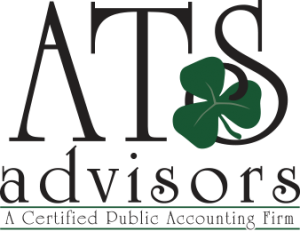On January 31, 2022 / IRS
Earned Income Tax Credit Michigan – IR-2022-20, January 28, 2022

IRS YouTube Video:
WASHINGTON – More people without children now qualify for the Earned Income Tax Credit (EITC), the federal government’s largest refundable tax credit for low- to moderate-income families.
In addition, families can use pre-pandemic income levels to qualify if it results in a larger credit. The Internal Revenue Service and partners across the nation highlight those changes today as they mark the 16th annual EITC Awareness Day.
Enacted in 1975, EITC is regarded as one of the government’s largest antipoverty programs helping millions of American families every year. The IRS and partners nationwide urge people to check to see if they qualify for this important credit, and also urge people who don’t normally file a tax return to review whether they qualify for EITC and other valuable credits like the Child Tax Credit or the Recovery Rebate Credit, also referred to as stimulus payments.
“There are important changes to EITC that will help this credit reach more hard-working families this year,” said IRS Commissioner Chuck Rettig. “We urge people potentially eligible for this valuable credit to review the guidelines; many people each year overlook this and leave money on the table. On this EITC Awareness Day, we want to make sure everyone who qualifies for the credit knows about it and has the information they need to get it.”
The IRS began accepting 2021 tax returns on January 24, 2022. Taxpayers can ensure they’re getting all the credits and deductions for which they qualify, including EITC, by filing their taxes electronically, using a trusted tax professional or using an IRS Free File partner’s name-brand software. Taxpayers whose adjusted gross income (or AGI) is $73,000 or less qualify for Free File partner offers.
The IRS also reminds taxpayers that the quickest way to get a tax refund is by filing an accurate tax return electronically and choosing direct deposit for their refund. Tax software, tax professionals and other free options can help people see if they qualify for the EITC.
What’s new?
Childless EITC expanded for 2021
For 2021 only, more childless workers and couples can qualify for the EITC, and the maximum credit is nearly tripled for these taxpayers. For the first time, the credit is now available to both younger workers and senior citizens.
For 2021, the EITC is generally available to filers without qualifying children who are at least 19 years old with earned income below $21,430; $27,380 for spouses filing a joint return. The maximum EITC for filers with no qualifying children is $1,502, up from $538 in 2020. There are also special exceptions for people who are 18 years old and were formerly in foster care or are experiencing homelessness. Full-time students under age 24 don’t qualify. There is no upper age limit for claiming the credit if taxpayers have earned income. In the past, the EITC for those with no dependents was only available to people ages 25 to 64.
Income from 2019
Another change for 2021 allows individuals to figure the EITC using their 2019 earned income if it was higher than their 2021 earned income. To qualify for the EITC, people must have earned income through employment or other sources, so this option may help workers get a larger credit if they earned less in 2021 or received unemployment income instead of their regular wages. See the instructions for Form 1040 PDF, line 27 c.
Phase out and credit limits
For 2021, the amount of the credit has been increased and the phaseout income limits at which taxpayers can claim the credit have been expanded. For instance, the maximum EITC for a married couple filing jointly with three or more children is $6,728 and the upper-income level for that same family is $57,414. In 2020, the maximum EITC for a family in that situation was $6,660 and the upper-income level was $56,844.
Taxpayers should also note that any Economic Impact Payments or Child Tax Credit payments received are not taxable or counted as income for purposes of claiming the EITC. Eligible individuals who did not receive the full amounts of their Economic Impact Payments may claim the Recovery Rebate Credit on their 2021 tax return. See IRS.gov/rrc for more information.
2021 and beyond
New law changes expand the EITC for 2021 and future years. These changes include:
- More workers and working families who also have investment income can get the credit. Starting in 2021, the amount of investment income they can receive and still be eligible for the EITC increases to $10,000. In 2020, the limit was $3,650. After 2021, the $10,000 limit is indexed for inflation.
- Married but separated spouses can choose to be treated as not married for EITC purposes. To qualify, the spouse claiming the credit cannot file jointly with the other spouse, must have a qualifying child living with them for more than half the year and either:
- Do not have the same principal residence as the other spouse for at least the last six months out of the year.
- Are legally separated according to their state law under a written separation agreement or a decree of separate maintenance and not live in the same household as their spouse at the end of the tax year for which the EITC is being claimed.
- Taxpayers should file Schedule EIC (Form 1040) and check the box showing them as married filing separately with a qualifying child.
- In the past, married taxpayers had to file with their spouse to claim the EITC.
- Single people and couples with children who have Social Security numbers can claim the credit, even if their children do not have SSNs. In this instance, they would get the smaller credit available to childless workers. In the past, these filers didn’t qualify for the credit.
- Taxpayers should file Schedule EIC (Form 1040) if they have a qualifying child. If they have at least one child who meets the conditions to be their qualifying child for purposes of claiming the EITC, they should complete and attach Schedule EIC to their Form 1040 or 1040-SR even if that child doesn’t have a valid SSN. For more information, including how to complete Schedule EIC if your qualifying child doesn’t have a valid SSN, see the instructions for Form 1040 PDF, line 27a, and Schedule EIC.
Vital refund boost
The EITC is the federal government’s largest refundable federal income tax credit for low- to moderate-income workers. For those who qualify, and if the credit is larger than the amount of tax they owe, they will receive a refund for the difference. While the majority of those eligible claim the EITC every year, IRS estimates that one of five eligible taxpayers do not claim the credit.
Nationwide last year, almost 25 million eligible workers and families received over $60 billion in EITC allowing for the payment of necessities, housing, and educational training, with an average EITC nationwide of $2,411. For 2021, the EITC is worth as much as $6,728 for a family with three or more children or up to $1,502 for taxpayers who do not have a qualifying child.
Look for EITC Refunds by early March if no issues with tax return
By law, the IRS cannot issue refunds before mid-February for tax returns that claim the EITC or the Additional Child Tax Credit (ACTC). The IRS must hold the entire refund − even the portion not associated with the EITC or ACTC and the Recovery Rebate Credit if applicable. This helps ensure taxpayers receive the refund they deserve and gives the agency more time to detect and prevent errors and fraud.
Where’s My Refund? on IRS.gov and the IRS2Go app will be updated with projected deposit dates for most early EITC/ACTC refund filers by February 19. Therefore, EITC/ACTC filers will not see an update to their refund status for several days after February 15. Due to weekends and other factors, the IRS expects most EITC or ACTC related refunds to be available in taxpayer bank accounts or on debit cards by the first week of March, if they choose direct deposit and there are no other issues with their tax return.
Workers who can claim the EITC
Workers at risk for overlooking this important credit include taxpayers:
- Without children, including those workers who are at least 19 years old and older than 64
- Living in non-traditional families, such as a grandparent raising a grandchild
- Whose earnings declined or whose marital or parental status changed
- With limited English language skills
- Who are members of the armed forces
- Living in rural areas
- Who are Native Americans
- With disabilities or who provide care for a disabled dependent
How to claim the EITC
To get the EITC, workers must file a tax return and claim the credit. Eligible taxpayers should claim the credit even if their earnings were below the income requirement to file a tax return. Free tax preparation help is available online and through volunteer organizations.
Those eligible for the EITC have these options:
- Find a trusted tax professional. The IRS also reminds taxpayers that a trusted tax professional can prepare their tax return and provide helpful information and advice. Tips for choosing a return preparer, including certified public accountants, enrolled agents, attorneys and many others who don’t have a professional credential, and details about national tax professional groups are available on IRS.gov. EITC recipients should be careful not to be duped by an unscrupulous return preparer.
- Free File on IRS.gov. Free brand-name tax software is available that leads taxpayers through a question-and-answer format to help prepare the tax return and claim credits and deductions if they’re eligible. Free File also provides online versions of IRS paper forms, an option called Free File Fillable Forms, best suited for taxpayers comfortable preparing their own returns.
- Free tax preparation sites. EITC-eligible workers can seek free tax preparation at thousands of Volunteer Income Tax Assistance (VITA) and Tax Counseling for the Elderly (TCE) sites. To locate the nearest site, use the search tool on IRS.gov, the IRS2Go smartphone application, or call toll-free 800-906-9887. Taxpayers should bring all required documents and information.
The IRS reminds taxpayers to be sure they have valid Social Security numbers for themselves, their spouse if filing a joint return, and for each qualifying child claimed for the EITC. The SSNs must be issued before the due date of the return, including extensions. There are special rules for those in the military or those out of the country.
Avoid errors
Taxpayers are responsible for the accuracy of their tax return even if someone else prepares it for them. Since the rules for claiming the EITC can be complex, the IRS urges taxpayers to understand all of them. People can find help to make sure they’re eligible by visiting a free tax return preparation site, or using Free File software or by using a paid tax professional.
Beware of scams
Be sure to choose a tax preparer wisely. Beware of scams that claim to increase the EITC refund. Scams that create fictitious qualifying children or inflate income levels to get the maximum EITC could leave taxpayers with a penalty.
Visit IRS online
IRS.gov is a valuable first stop to help taxpayers get it right this filing season. Information on other tax credits, such as the Child Tax Credit, is also available.
Related items
Contact Our Team of Experts today to learn more about the Earned Income Tax Credit Michigan.


